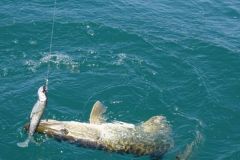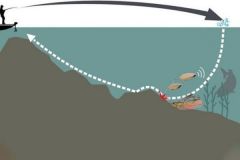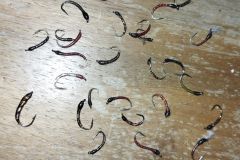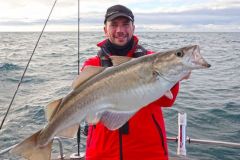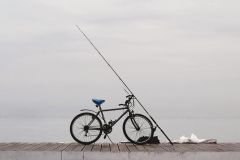The brittle principle
Broken-water fishing is a static technique, either from the shore or from an anchored boat, used to target catfish precisely and efficiently.
It is based on the use of a brittle wire this is a low-strength wire (usually nylon between 30 and 45/100ths) which connects the main assembly to an anchoring point (weight, obstacle or support). This system keeps the bait in a fixed position, even in the presence of current, in a dedicated area likely to harbor catfish.
The rods, placed vertically on the bank once the rig has been removed, will be taut, with the drag applied, to facilitate breaking of the brittle strand. When a catfish bites and pulls on the rig, the brittle line breaks, making a first strike and freeing the main line for a direct fight without ballast.
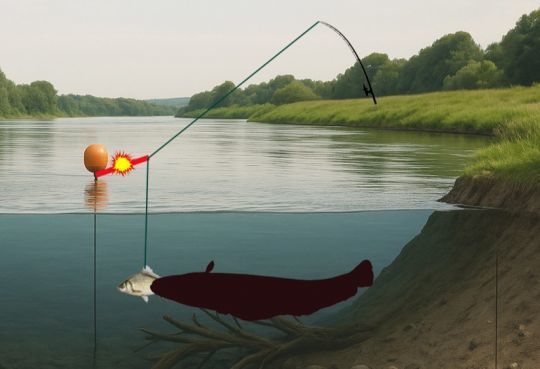
Breaker attached to branches to exploit natural hiding places
In some rivers, the wooded banks present lower branches and submerged roots or fallen trees on the water. These natural elements can be used to attach the brittle. The brittle wire then connects the main assembly to a solid branch, raised above the surface.
Ideal during the day for searching for catfish in shaded resting areas under foliage or near an obstacle zone on the edge, it is in the evening, when catfish move up into shallower areas to hunt, that this technique proves particularly effective.
The main advantage of this method is its discretion and ease of installation, without the need for heavy equipment. Particularly suitable for from the riverbank provided you have a boat or float-tube to place the line on the opposite bank.
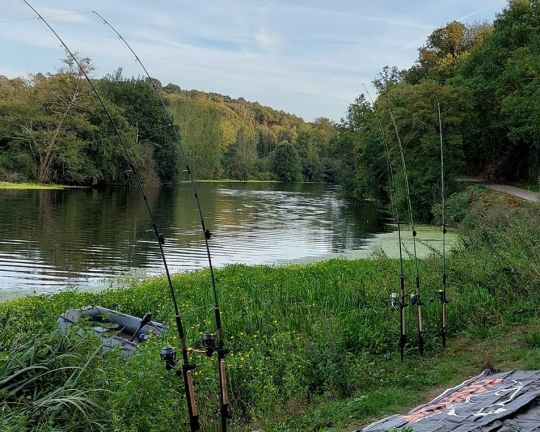
Breakaway attached to a buoy to reach inaccessible areas
The buoy variant allows you to position the bait along the river, away from the banks or in places inaccessible from the shore. A floating buoy (bottle, can, or homemade buoy) is firmly anchored to the bottom with rope and ballast. The main rig is connected to this buoy by the breakaway wire.
This configuration allows precise fishing in a central pit , near a sandbank or at the limit of a current and a counter-current where very large catfish like to hang out.
This technique requires more preparation, but is ideal for square off large areas or place lines away from the edge.
Lost-stone breaker for easy bottom fishing
In this variant, which allows the bait to be presented close to the bottom, a stone as ballast, connected to the assembly by the brittle wire. At the time of setting, the stone remains at the bottom, which makes it possible to fight catfish freely without having to drag a lead. It's a method that's much appreciated for its simplicity his side ecological (no lost lead), and its efficiency.
The stone is placed on the bottom of the water using a float tube or boat. The brittle line is stretched between the stone and the main line, allowing precise placement of the bait.
Ideal for large, deep areas, this variant can also be used to great effect on the edges of very congested areas, or in areas with strong currents.
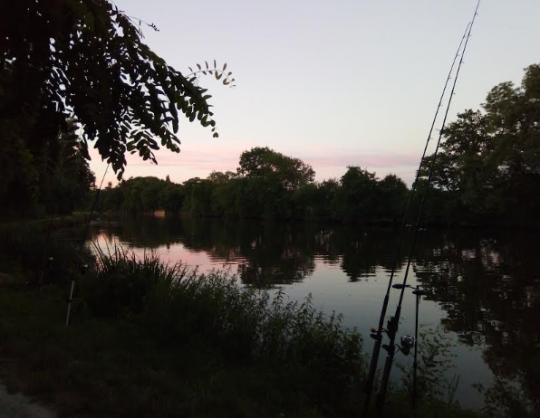
The equipment: sturdy and efficient
Whatever the type of breaker used, the choice of material will always follow the same logic. A c anne powerful, between 2.70 m and 3.30 m (to keep the banner out of the water), with a power of 100-300g. The choice of rod holders is also important, as they will be subjected to considerable pressure. Remember to use specific metal spikes, and avoid aluminum surf casting spikes, which are far too fragile.
A high-capacity reel, with fixed or rotating spool, is recommended depending on the distance the lines are to be placed. It should have a powerful, progressive drag so as to be able to extract the most beautiful specimens from crowded areas, not necessarily so easy from the shore. It should be fitted with 50 to 60/100 braid ème for the same reasons, and to limit abrasion.
An underwater float can be appreciated for the lost stone method, keeping the bait off the bottom. The same goes for a classic float on lines that will be snapped onto a buoy or branches, allowing you to adjust the depth of presentation of the bait in the water.
Mix methods and maximize your chances
Just as a river does not have the same types of stations throughout its course, the 3 variants should not be used exclusively. When a position is chosen, as the angler can use up to 4 rods while fishing, it may be wise to cover as much ground and as many types of position as possible with the 3 variants.
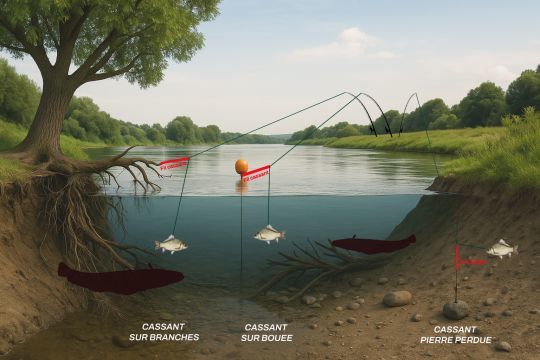
A final word of advice: avoid using brittle threads that are too long and risk being left in the wild. Use an extension cord or hemp twine to keep the brittle thread to around 10 cm.





